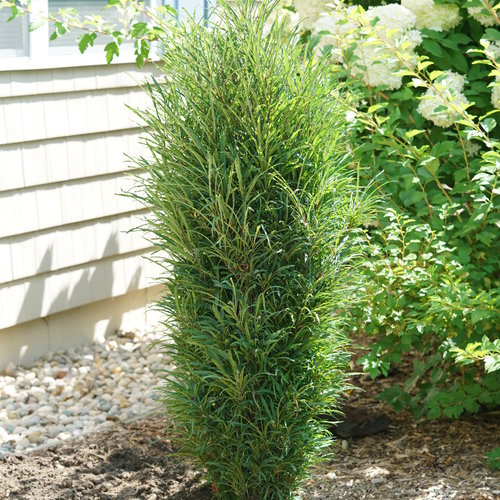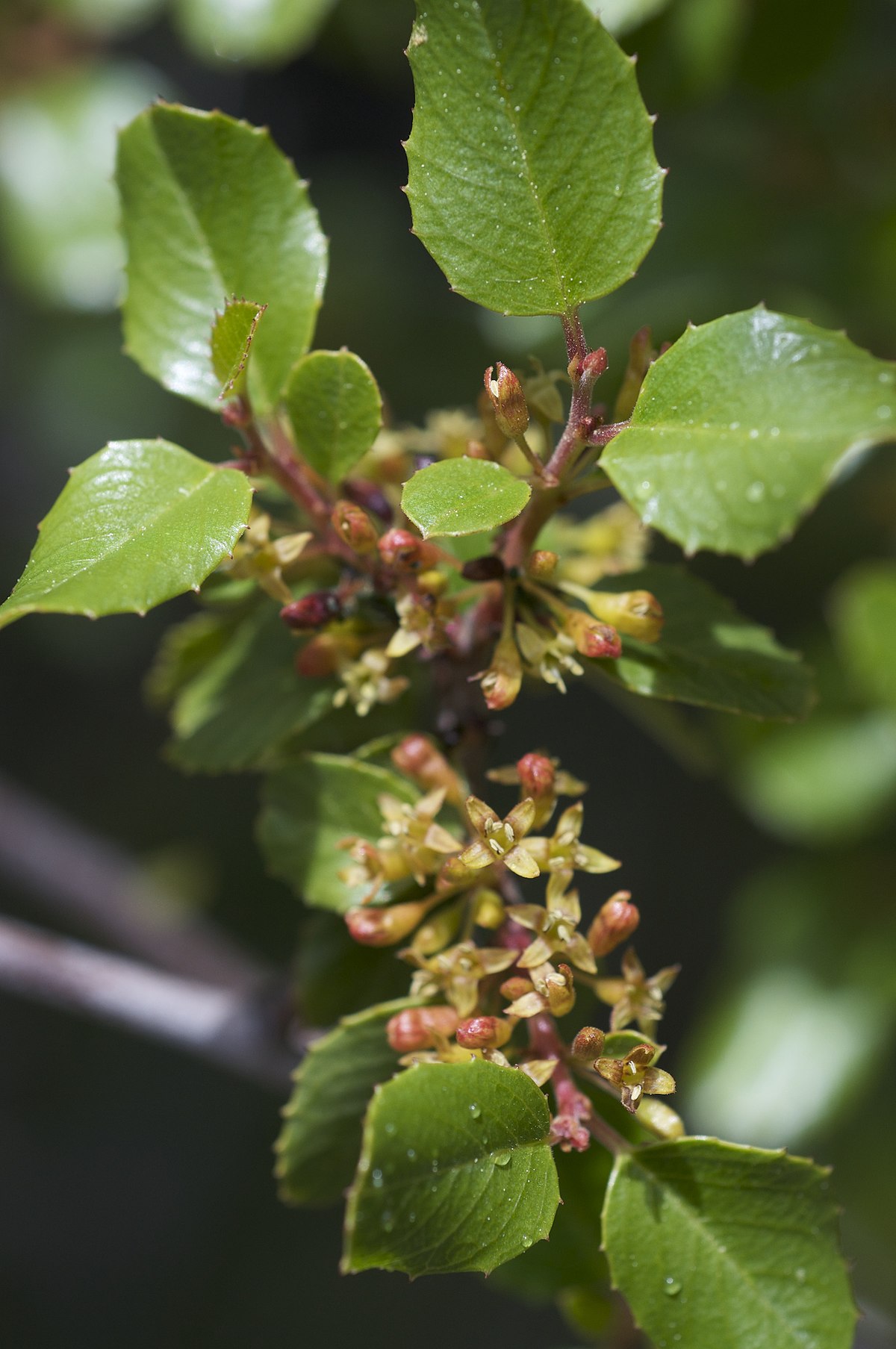Rhamnus: The Versatile Shrub
Rhamnus is a genus of shrubs and trees that are native to temperate and tropical regions around the world. There are over 150 species of Rhamnus, and they vary in size, growth habit, and foliage. Some Rhamnus species are evergreen, while others are deciduous.
One of the most common Rhamnus species is the Italian buckthorn (Rhamnus alaternus). Italian buckthorn is a fast-growing shrub that can reach heights of up to 20 feet. It has dark green, glossy leaves and small white flowers that bloom in the spring. Italian buckthorn is a popular choice for hedges because it is easy to shape and provides dense growth. It is also drought tolerant and can tolerate poor soil conditions.
Another popular Rhamnus species is the Glossy buckthorn (Rhamnus frangula). Glossy buckthorn is a deciduous shrub that can grow up to 10 feet tall. It has dark green, glossy leaves and small yellow flowers that bloom in the spring. Glossy buckthorn is a good choice for planting in shady areas because it is tolerant of shade. It is also deer resistant.
Rhamnus shrubs are relatively easy to care for. They prefer full sun but can tolerate some shade. They are drought tolerant once established, but they should be watered regularly during the first year after planting. Rhamnus shrubs are not susceptible to many pests or diseases.
Rhamnus shrubs are versatile plants that can be used in a variety of landscape settings. They can be used as hedges, screens, specimen plants, or groundcovers. They are also a good choice for planting in containers.
Here are some of the benefits of using Rhamnus shrubs in your landscape:
- They are drought tolerant and can thrive in poor soil conditions.
- They are deer resistant.
- They are easy to care for.
- They come in a variety of sizes and shapes, so you can find one that is perfect for your space.
- They are attractive and can add interest to your landscape.
If you are looking for a versatile and low-maintenance shrub for your landscape, Rhamnus is a great option.
Rhamnus is a genus of about 140 species of shrubs or small trees, commonly known as buckthorns. They are found throughout the temperate and subtropical Northern Hemisphere, and also more locally in the subtropical Southern Hemisphere in parts of Africa and South America. One species, the common buckthorn (Rhamnus cathartica), is able to flourish as an invasive plant in parts of Canada and the U.S., where it has become naturalized.
Rhamnus species are dioecious, with male and female flowers on separate plants. Most species have yellowish green, small, unisexual or rarely polygamous flowers; which are produced singly or in axillary cymes, cymose racemes, or cymose panicles containing a few flowers. The fruit is a drupe, which is typically black when ripe.
Rhamnus species have a variety of uses. Some species are used as ornamental plants, while others are used for their medicinal properties. The bark of Rhamnus cathartica, for example, is a traditional purgative.
If you are interested in learning more about rhamnus, I recommend visiting the Garden Wiki. This website provides comprehensive information about the genus, including its taxonomy, distribution, ecology, and uses. You can also find images, videos, and articles about rhamnus on this website.
FAQ of rhamnus
- What is Rhamnus?
Rhamnus is a genus of shrubs and trees that includes about 200 species. They are found in temperate and tropical regions around the world. Some common Rhamnus species include buckthorn, cascara sagrada, and holly.
- What are the medicinal uses of Rhamnus?
Some species of Rhamnus have been used in traditional medicine for centuries. The most well-known medicinal use of Rhamnus is for its laxative properties. The bark, berries, and leaves of some Rhamnus species contain compounds that can stimulate the bowels and promote bowel movements. Rhamnus is also used to treat constipation, hemorrhoids, and other digestive problems.
- What are the side effects of Rhamnus?
Rhamnus can cause a number of side effects, including diarrhea, cramping, nausea, and vomiting. It can also interact with certain medications, so it is important to talk to your doctor before taking Rhamnus.
- Is Rhamnus safe for everyone?
Rhamnus is not safe for everyone. It should not be used by children, pregnant women, or people with certain medical conditions, such as kidney disease or ulcers.
- How can I get Rhamnus?
Rhamnus is available in a variety of forms, including capsules, tablets, and teas. It can also be found as a tincture or extract. Rhamnus is available over-the-counter and by prescription.
Image of rhamnus
5 different images of "rhamnus" from Pinterest:
- Rhamnus catharticus, also known as buckthorn, is a shrub or small tree with yellow flowers and black fruits.

- Rhamnus frangula, also known as frangula, is a shrub or small tree with white flowers and red fruits.

- Rhamnus ilicifolia, also known as California buckthorn, is a shrub or small tree with dark green leaves and yellow flowers.

- Rhamnus purshiana, also known as cascara sagrada, is a shrub or small tree with yellow flowers and brown fruits.

- Rhamnus alaternus, also known as Italian buckthorn, is a shrub or small tree with dark green leaves and white flowers.

Post a Comment for "Rhamnus: The Versatile Shrub"